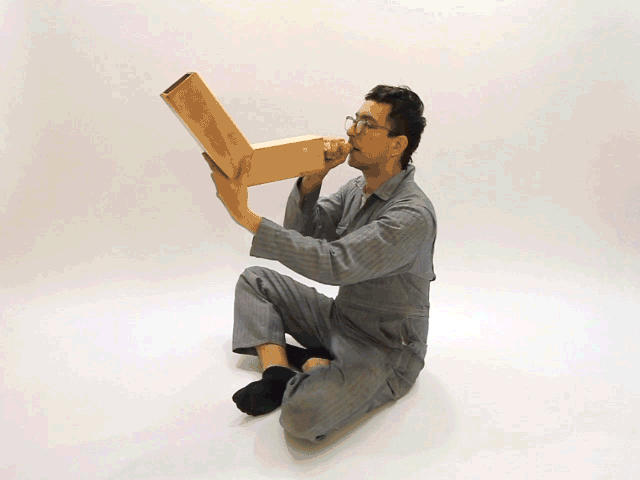Bethanie Jones works in plaster, making her casts out of wood and found objects. Josh Frank, her partner in art, worked with her on this series which will be shown alongside solo work at Peter Miller Books in Pioneer Square through October. A reception will take place during First Thursday 5:30 to 8:30 PM.
Using suggestive abstract patterns and realistically rendered sculptures, Bethanie and Josh reconsider the lifestyle of objects. Artifacts of the human world—a slouching pillow in an iron stand, t-shirts life-like on hangers, patterns snaking across off white rugged surfaces, a drain pipe – form a romantic language for the unsung objects in our lives.
You work at an architecture firm, does that inform your art or do you see them as separate?
I’m an architectural designer at DLR Group and when we get down to it a lot of that revolves around thinking about space and how a user might experience it. I’m very interested in the psychology of space.
My art and work influence one another and because of that, I find myself in a lot of tension. I’m caught in the contrast between the rigidity of architecture while wanting to apply something that is much more conceptual and fluid. It can be difficult and there’s a lot of push back sometimes.
I’m constantly looking for sensation in extremely mundane moments. Perceiving beauty in objects, conversations and things unseeable.
In what way does your interest in the psychology of space play out in your work?
These objects are speaking about processes, patterns, things that are very simple but they say so much about a place and what makes up something or someone. I make through the lens of WORK and PLACE – not to be confused with workplace.
I think a new sensibility can extend into our surroundings and we can be much more watchful, more sensitive, even more bored, when we talk about leveraging innovation. I think we’ve lost that sense of boredom where we can form ideas that are very innovative.
One of the pieces consists of three 5-foot tall diagrams depicting meetings on a sidewalk.
I spent the last year documenting my interactions running into strangers on the street, creating logs of when and where it occurred, what the individual looked like, what they were wearing.
When I see in the distance that I’m about to run into a person, I think, “oh fuck this is annoying.” I either have to go this way, they that way, and there’s still a chance we’ll run into each other. That moment is so fascinating; if we had done one thing differently in our day, that moment never would have happened. Two people that don’t know each other can be so in sync.
How did you and Josh come to work together on this project?
He and I work individually and sometimes together but we’re always conversing and our work is influenced through that conversation.
Josh and I knew each other in school and we’ve been working side by side for quite some time but never actually collaborated on something together. Our interests are different but at the same time, reflective. When presented this opportunity with Peter Miller I knew I wanted a partner and I wanted it to be josh.
The pieces are all very different in how they are placed, hung, or arranged, can you talk about how you worked within the gallery to display everything?
I struggle with the definition of a “gallery” because these things are just things made because I find moments or situations interesting and I react to them. For me to put them in a gallery feels very out of place.
For me, the process is a part of the end product. It’s hard for me to say that and mean what I truly mean because everything has a process and it’s important but I really try to allow the objects to do whatever they want. None of these objects are precious- they’re constantly developing. If one gets a chip/crack/mold, it’s part of how it wants to develop.
You’ll notice at the show that I’m struggling with the concept of a gallery by how the work is arranged.
I’m excited to set up the space, in the same way that the process is constantly evolving, I know that once the pieces are in the space, that too will evolve and they will tell me where they want to live.
They’re there to live and hopefully stimulate someone in a new way.

